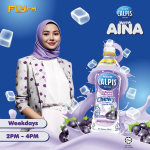By Sydney-based Mike Da Silva – CEO of MDSA Marketing Communications and Executive Producer on a number of Film projects….
For over a century, moviegoers have enjoyed associations with movies and movie stars. They’ve wanted to drive an Aston Martin like James Bond, have a job like Anne Hathaway in ‘Devil wears Prada’, execute death defying feats like Tom Cruise in ‘Mission Impossible’ and ‘Top Gun Maverick’ and those in the ‘Fast and Furious’ franchise.
With cinema audiences bouncing back, and a wide array of TVOD, SVOD and AVOD Stream platforms available, with vast audiences watching anywhere, any time, the time has never been right for brands to consider product placement and placement leveraging, as a marketing discipline to support their brand messaging.
Some market-leader brands are a ‘must have’ by Directors. If the script calls for a vehicle to be used, Mercedes Benz, Audi and Range Rovers are the go-to brands. Apple laptops and iPhones are also high value brands.
According to a recent review of the top brands placed in Movies in 2022, based on the amount of advertising revenue they generated, the top brand was Apple, followed by Nike, Ford, Chevrolet and Ray Ban.
‘Fast X’ generated US$146 million from over 120 brands, against a US$340 million budget.
Brands can also in be involved on a no cost in-kind basis, to reduce production costs, in return for the placement visibility. Hotels, airlines and IT/Telco equipment are logical examples.
Negotiating for a brand to be integrated in a movie or TV Programme offers brand owners an association with the theme of the movie and the actors, capturing implied star association. Plus an economic and permanent form of advertising for a set cost.


The best way for a brand to be involved is at script development stage, in any of these defined roles:
• Where a brand is used or mentioned by an Actor in a scene. Like Aston Martin or Omega and James Bond.
• Where a brand is in the foreground of a scene. Like US Navy recruitment following ‘Top Gun’ and ‘Top Gun Maverick’ or Apple shares in ‘Forest Gump’.
• Where a brand is in the far background of a scene. Like hotels or airlines, cities and even countries.
• Digital placements: Where brands can be introduced digitally as advertising messages in post-production, via photoshopping over existing spaces, or creation of new spaces, like billboards, bus shelter posters, taxi and bus signage.
Our Woolmark digital poster placement in ‘How to lose friends and Alienate people’ was reported by Hollywood Reporter to be the first commercial digital placement.


For ‘ET’, Spielberg’s team approached Mars, for Elliott to coax ET up the stairs with M&M’s. Mars declined the offer, so the team approached competitor Hershey’s. A farsighted Brand Manager created peanut butter chocolate buttons which were used in the scene. ‘ET’ became the catalyst for the launch of Reese’s pieces whilst riding on the success of the movie, and very quickly became a US$600 million brand.
The optimum opportunity for a brand is to execute tandem promotions, leveraging on the studio’s marketing, directed to their own customers.
For James Bond’s ‘Die another Day’ movies, Heineken executed a promotion throughout Europe, in the release lead up period. In ‘Goldeneye’, BMW provided their brand new Z3 convertible for Pierce Brosnan to drive. The Z3 hadn’t been released in the US, and a reputed 25,000 orders were taken by customers on the strength of that scene.
MARKETING Magazine is not responsible for the content of external sites.











